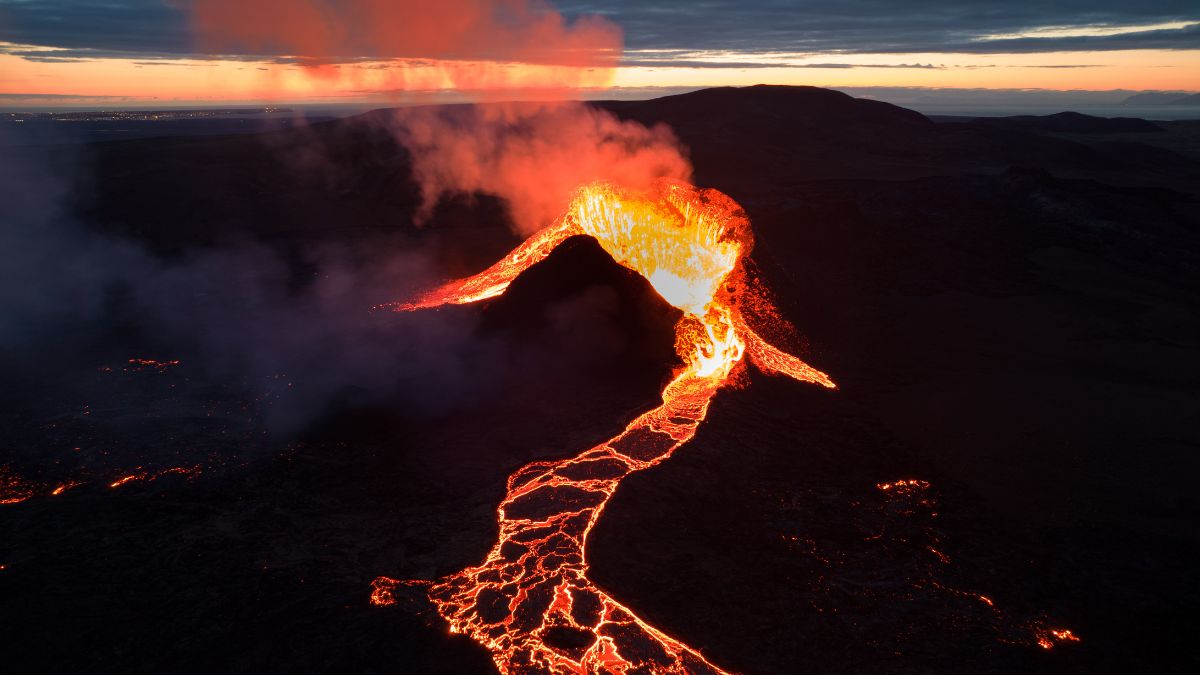Volcanoes are powerful openings in the Earth’s crust where hot lava, ash, and gases escape from below the surface. Some countries have more volcanoes because they sit on the most active tectonic boundaries. These volcanic regions form unique landscapes, fertile soil, and dramatic eruptions that influence both nature and human life. Understanding where volcanoes occur helps us learn more about Earth’s structure and the forces that shape our planet.
Which Country Has the Most Volcanoes?
Indonesia has the most volcanoes in the world, with more than 120 active volcanoes. The country lies directly on the Pacific Ring of Fire, the world’s most active volcanic belt. Indonesia’s islands were formed by constant volcanic activity as multiple tectonic plates push, collide, and slide beneath each other. This creates frequent eruptions, earthquakes, and powerful explosions that have shaped its geography over thousands of years.
How Are Volcanoes Formed?
Volcanoes form when molten rock, called magma, rises through cracks in the Earth’s crust. This usually happens at tectonic plate boundaries where plates move in different directions. When magma reaches the surface, it erupts as lava, ash, and gases, eventually building a volcanic mountain.

Top 5 Countries With the Most Volcanoes
1. Indonesia
Indonesia has over 130 active volcanoes, the highest in the world. Its location between the Indo-Australian Plate, Pacific Plate, and Eurasian Plate makes the region extremely unstable. Volcanoes like Merapi, Krakatoa, and Tambora have caused historic eruptions that changed landscapes, destroyed settlements, and even affected global temperatures by releasing huge amounts of ash into the atmosphere.
2. Japan
Japan has more than 100 active volcanoes due to its position at the intersection of four major plates. The country experiences regular eruptions, geothermal activity, and thousands of earthquakes each year. Mount Fuji, its most famous volcano, stands as a national symbol. Japan uses volcanic heat for hot springs, tourism, and geothermal energy that helps power cities.
3. United States
The United States has around 65 active volcanoes, most of them located in Alaska. Alaska alone has more volcanic activity than many entire countries because it lies on the northern edge of the Ring of Fire. Hawaii has shield volcanoes that release slow-moving lava, building new land. The US also has dangerous volcanoes like Mount St. Helens, which erupted violently in 1980, reshaping the entire region.
4. Russia
Russia’s Kamchatka Peninsula contains around 30 active volcanoes. This area has some of the tallest and most explosive volcanoes in the world. Kamchatka’s rugged terrain was created by the Pacific Plate subducting beneath the Eurasian Plate. The region is filled with hot springs, geysers, and volcanic fields that attract explorers and scientists globally.
5. Chile
Chile has over 90 active volcanoes spread throughout the Andes Mountains. The movement of the Nazca Plate under the South American Plate creates frequent and powerful eruptions. Volcanoes like Villarrica and Llaima release lava fountains, glowing craters, and constant steam. Chile’s volcanic chain stretches thousands of kilometers, shaping valleys, glaciers, and fertile farmland.
Interesting Facts About Volcanoes
Volcanoes Create New Land
When lava cools, it becomes solid rock that gradually builds up into new land. Entire islands like Hawaii and Iceland were created this way. Over time, repeated eruptions can raise mountains, expand coastlines, and change the shape of continents. This process shows how volcanoes play a major role in forming Earth’s surface.
Volcanic Soil Is Extremely Fertile
Volcanic soil, known as andisols, contains minerals like potassium, calcium, and iron. When lava breaks down, it enriches the ground, making it ideal for farming. Regions around volcanoes often grow crops faster and in larger quantities. This is why millions of people live near volcanoes despite the risks.
Volcanoes Can Affect Global Climate
Large eruptions send ash and sulfur gases into the atmosphere, which can block sunlight for months. This lowers temperatures around the world. The 1815 eruption of Mount Tambora in Indonesia caused the “Year Without a Summer,” leading to failed harvests and food shortages worldwide. Volcanoes show how Earth’s systems are deeply connected.
The Ring of Fire Has the Most Volcanoes
The Pacific Ring of Fire contains about 75% of the world’s active volcanoes. It forms a giant horseshoe-shaped zone around the Pacific Ocean. The area experiences constant volcanic eruptions, earthquakes, and tsunamis because many tectonic plates meet here. It is the most studied volcanic region on Earth.
Underwater Volcanoes Are More Common Than Land Volcanoes
More than 80% of volcanoes on Earth lie under the oceans. These underwater volcanoes form mid-ocean ridges and underwater mountains. Some erupt so strongly that they create entirely new islands when lava piles up above sea level. Scientists use robots and submarines to study these hidden volcanoes.
Read more: Which Country Has the Most Mountains?
Countries with the most volcanoes are located in zones where Earth’s plates collide, pull apart, or move over hotspots. Studying them helps us understand Earth’s past, present, and future. Keep reading for more such articles.
Comments
All Comments (0)
Join the conversation